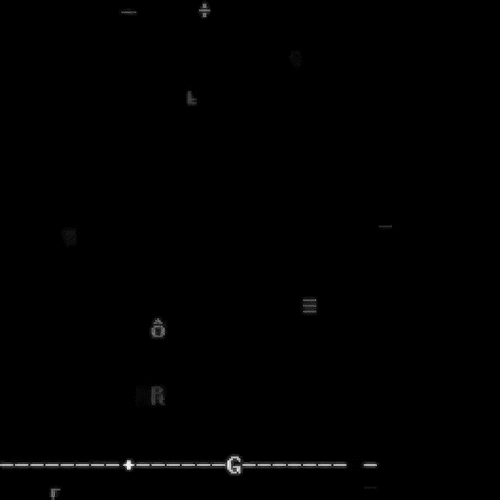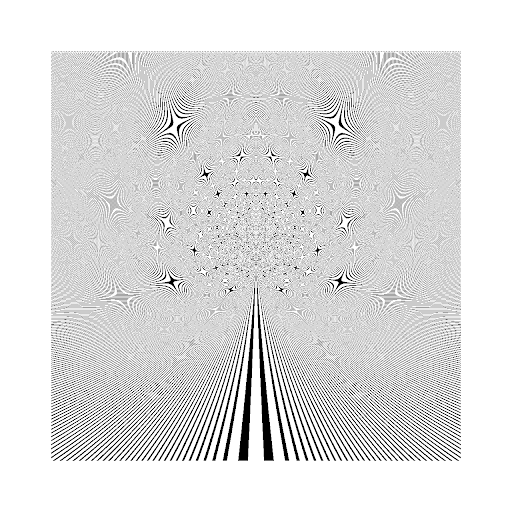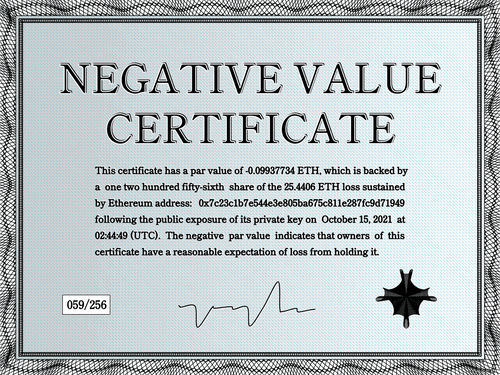The Fingerprints Collection
View the full galleryFingerprints believes art is essential in helping us understand the capabilities of blockchain and its growing importance in the world.
The Fingerprints Collection contains seminal works making innovative use of this new medium.
Larva Labs
Inspired by Sol LeWitt’s Wall Drawings, Autoglyphs are considered the first “on-chain” generative art collection on the Ethereum blockchain. Created in 2019, once the 512 Autoglyphs were minted, the generator shut itself off.
They are a completely self-contained mechanism for the creation and ownership of an artwork.
Mathcastles
Comprised of a collection of 9,906 generative ASCII art NFTs, each NFT represents a parcel of land on a 20-level structure known as the ‘hypercastle’.
Parcels, which each have unique properties, can be switched from ‘terrain’ mode to ‘daydream’ mode, allowing its owner or an authorized user to draw on them.
Using procedurally generated code that lives on Ethereum, Terraforms are an advanced experiment in purely on-chain metaverse creation.
Sarah Meyohas
In 2015, Predating the launch of Ethereum, Meyohas forked Bitcoin to create Bitchcoin, backing each coin with a 5-by-5 segment of her photography, custodied in a vault.
In 2021, reserved Bitchcoins were migrated to Ethereum, each backed by a petal from her 2017 work Cloud of Petals, in which 16 male workers handpicked 100,000 rose petals (proof of work). The 3,291 ‘most beautiful’ petals were chosen to be pressed, backing the 3,291 Bitchcoins.
0xDEAFBEEF
Procedural synthesis meets AI synthesis as generative pitch envelopes control the Holly+ vocal model to produce glissando and staccato passages.
Deafbeef
DEAFBEEF’s works (organized into multiple series) are self-contained code written in C that directly output raw numerical data encodable to audiovisual media.
As Ethereum is already dependent on C compilers, the works require no externalities, increasing the likelihood that they will remain preserved for the life of the Ethereum network.
Larva Labs
The predecessor to the Autoglyphs, the Protoglyph was an early generative experiment by Larva Labs dating back to 2018. Too complicated to efficiently code in Solidity, the math was simplified, reducing both the complexity of the code and image size, leading to the creation of the Autoglyphs. An edition of 77, the work was publicly released in 2022 by PROOF.
Deafbeef
A continuation of DEAFBEEF's works, so far including (0) "Caves" where a lone adventurer explores fractal caves of increasing complexity in the style of ASCII roguelike games, and (1) "Noumenons", a tribute to Eadweard Muybridge’s animal locomotion images.
Rhea Myers
Myers commissioned artists Chris Webber and and Bassam Kurdali to create 3D printable models of commonplace objects that had become part of canonical art history—a urinal, a balloon dog, and a pipe.
The artists retained their copyrights via CC-BY-SA license, with attribution to Myers as the person who commissioned the work. The license permits anyone to create a rendition of the models, 3D-printed or otherwise.
As representing off-chain truth on-chain is difficult, Myers issued Certificates of Inauthenticity for the series. Token owners can prove that the work they are showcasing alongside the certificate is inauthentic—with cryptographic certainty.
Mitchell F. Chan
A digital reproduction of Yves Klein’s 1962 work in which he sold fresh air in exchange for gold ingots with buyers receiving a receipt for a Zone of Immaterial Pictorial Sensibility, Chan’s Digital Zones of Immaterial Pictorial Sensibility utilized ERC-20 tokens in place of receipts, with the tokens linking to a section of a pure white blank screen.
In an ironic twist, the link was lost during the Swarm fork, making it a truly empty reference. When wrapped into an ERC-721 token, the result we get is Chan’s version of the original Klein receipt.
Figure31 and 0xmons
A set of 180 time-based artworks, each featuring a digital photograph. Each token showcases one photo from the set daily, cycling through the entire photo collection over the course of 180 days.
No token holder owns any specific image—they own, and share, all of them. The smart contract sets the 180 NFTs on a perpetual asynchronous loop, and no token will display the same photo as another at a single moment. The pieces of the series, while visually unique, remain interconnected at all points in time.
Rhea Myers
Showcasing key visual tropes from the Vaporwave moment via color and text, Tokens Equal Text is an edition of 32 composable Ethereum ERC-998 tokens, each token owns four child ERC-721 tokens. The ERC-721 tokens have short descriptive texts encoded as their ID numbers, making the parent token a composite of those parts.
Mitchell F. Chan
The Boys of Summer is a digital game artwork and generative PFP collection by Mitchell F. Chan that investigates our world’s favorite pastime: the quantification of self.
With an irreverent, provocative lens, using baseball characters and statistics as the creative medium, the work prompts us to examine our own value system and our inherent biases that shape our potential in how society decides what - and who - is ‘successful’.
Harm van den Dorpel
Consisting of 512+1 unique generative Ethereum NFTs, Mutant Garden Seeder was released in collaboration with Folia in 2021.
One mutant was minted per block number. Each transaction hash was used as a seed for a deterministic random function, populating a cartesian genetic network and functioning as a Turing-complete machine, which generates visual artworks. Each mutant evolves over time by itself.
Dom
Released in 2021 and comprised of 7,779 lists of randomized adventurer gear generated and stored on-chain, Loot (for Adventurers) invites users to ‘use Loot in any way you want’.
Open, permissionless, and composable by nature, the project represents a uniquely crypto-native experiment in world-building.
Steve Pikelny
Critically examining crypto’s speculative nature and promise of value, Negative Value Certificates are “backed by loss”, with each certificate claiming to represent a negative par value of -0.09937734 ETH, as a result of the public exposure (and subsequent loss) of a private key containing 25.4406 ETH.












